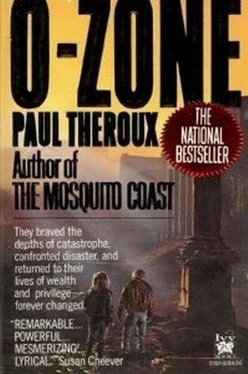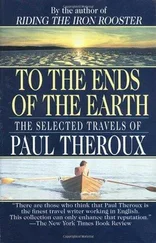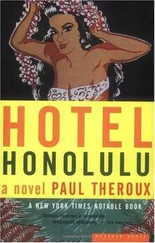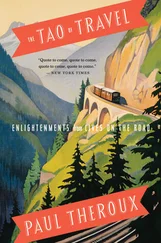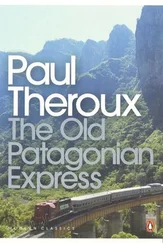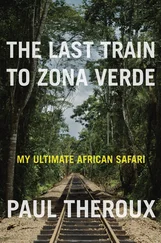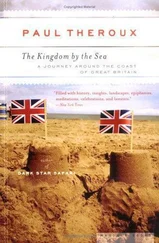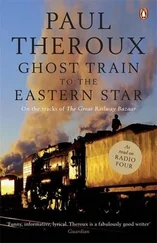It was mountains — flat mountains, hot mountains, thermal mountains: vast black patches in places that were dying of thirst or simply in need of additional rainfall. The mountains were great unbroken areas of black asphalt. In the Ivory Coast they had paved 3,400 square kilometers, and the Sulayyil Stripe in Saudi Arabia was almost a third larger. Moura had gone on both trips without knowing, without guessing; though she too had suspected airstrips and runways. Asfalt had a projected mountain in central Australia and another was being studied in the middle east — but fighting in the region, and finance, cast doubt on that middle-east mountain ever being made.
They looked like enormous parking lots. They were flat and featureless and black. They created rain. Hardy's job was finding their dimensions and their placement. Shaping them and siting them properly were crucial, because it was not merely that they were placed in areas of low rainfall, they also needed the right prevailing winds and the correct angles. The wide black mass became a hot spot and created a convection current, boosting the air passing over it. This heated air rose rapidly, as if against a mountainside and, rising, it cooled and the moisture in it condensed. And then there were clouds and, quite often, rainfall on the far side of this thermal mountain.
It was, most of all, a way of using millions of barrels of excess oil. It meant that oil production could be maintained, and it kept the price up.
The oil side had nothing to do with Hardy. He had invented ground patterns — black crescents — that modified wind direction, shifting the air to his mountain. It meant a greater use of asphalt. Thermal mountains had intensified Petroland's drilling and refining, and it was the making of the company, now one of the five big oil producers in the world. And in every country where the Asfalt Division had built a thermal mountain, the weather had been significantly modified. There was now rain — and trees and crops — where there had been desert.
But Asfalt dealt in disruptions. Secrecy was a necessity because of the scale of the projects-the large oil shipments, the land areas, the finance; all the things that could go wrong, the downside, the shortfall. When Hardy was asked how he made his living, he never mentioned that Asfalt was mainly concerned with weather modification on a grand scale. He said engineering, the oil industry, and sometimes he used Hooper's private joke: landscaping.
He had told Hooper, because Hooper had asked. He had never been able to withhold anything from his brother, and so he was particularly resentful that Hooper seemed to have so many secrets.
Asfalt was an American company, and yet all its work so far had been carried out abroad. Apart from one stripe in Mexico of relatively small proportions (though the precipitation yields were good), no plan had ever been put forward for an American mountain. All the good land was spoken for — it was owned and managed — and so no tract available was large enough for a thermal mountain that would make a difference. One was needed in the midwest, but no one could agree on where it should be sited. Federal agencies had obstructed all development plans so far.
Several enormous tracts of land had been put on the market, but as soon as the sellers discovered that Asfalt was interested, the price had gone up, the sellers thinking: Oil money! Defense contracts! Airstrips! Bases! And so the prices were prohibitive. Hardy had never believed that Asfalt would build a thermal mountain in America.
And then, by chance, the exclusion order was removed from O-Zone. Asfalt provided Hardy with Access Passes and instructions to camouflage the visit. Hooper said, "Let's spend New Year's there — have a party!" Murdick said, "I'll find the food!" The Eubanks had promised backup, and after pleading with them Fizzy agreed to navigate. But it was Hooper's enthusiasm that kept Hardy's intention secret: after Hooper took charge of the trip, no one asked why it was that Hardy's company had secured eight Access Passes. Asfalt had warned Hardy of the dangers in traveling in a Prohibited Area. But there were advantages, too. It was Federal, so it was protected, and it might be possible to lease it from the government. It was contaminated, so it was empty — who would dare go there, who would want it, or fight for it? It was large. It was a wilderness. It was one of the largest tracts of empty usable land that might ever be available to a private company. And some of it, Hardy now knew, had been cleared.
But Project O-Zone was classified: the very idea of it was secret. And Hardy knew that if the land was still radioactive it was useless. But what a coup if he could reactivate O-Zone! The first trip was meant as a way of getting a general impression and trying to decide the safety factors. That was the beginning of the longitudinal study. Later, if the budget were approved, he would do some preliminary plans, establishing its elevations, making maps. There would have to be many more trips, more studies, and especially needed was a grid of film and some satellite photography. Yet he knew now that O-Zone could easily contain a thermal mountain, and with this — perhaps the largest in the world, perhaps a chain of thermal mountains — it might establish a modified weather pattern for this part of the United States. That was for the future. The main thing at the moment was to get onto the ground again and make it look like another picnic.
He had come to see that it was a wonderful place, O-Zone — low hills and broad fields and sunken cities: perfect, really, and all ready to be poured full of asphalt.
In his office at the division, just before he set off for Cold-harbor, Hardy Allbright shut his eyes and saw it very clearly — the immense space, the emptiness, the ruin. Fifteen years ago its appeal was not merely that it was centrally located and unlikely to arouse suspicion — it was already underpopulated and somewhat wild; and most of all it was full of caves. They were deep limestone caverns, with the dimensions of the gorges aboveground: they were in some cases believed to be bottomless pits. Put nuclear trash in sealed containers in these holes and it would never be heard of again. Who could possibly tamper with them? That was the theory.
The contamination was so bad, so catastrophic when it came, that it was hardly publicized, for fear of its being so demoralizing. And even after it became known that half the state had been uprooted and moved, it was regarded as a precaution rather than a necessity; and it was never known how large an area in the heartland of the United States had become uninhabitable. It was one of those events which occur on such a scale and are so tragic and empty of hope that they are kept secret — any publicity only adds to the misfortune, and simply knowing about them seems like a curse.
But time had passed. There had been changes. The place had gone from wilderness to civilization and back to wilderness; it had been returned to America again. Now it was ready for anything. The woods could remain as protection, the roads and some of the towns might be reactivated, and part of that new state would be determined as an area of high rainfall. It did not matter whether the prairie in the western quarter would be affected, or whether the rest of the plateau would return to intensive agriculture — it was not a question of food. It was all experimental, and an American first. The point was that O-Zone could be controlled, so what did it matter whether the input of rain resulted in a hydroelectric scheme or altered topography? It was a sealed zone, and when it was unsealed and its weather modified, it could be penetrated according to a scientific plan, and colonized like a new planet. In a world of dead ends, it would be a fresh start. And there would never again be any accidents there.
Читать дальше
